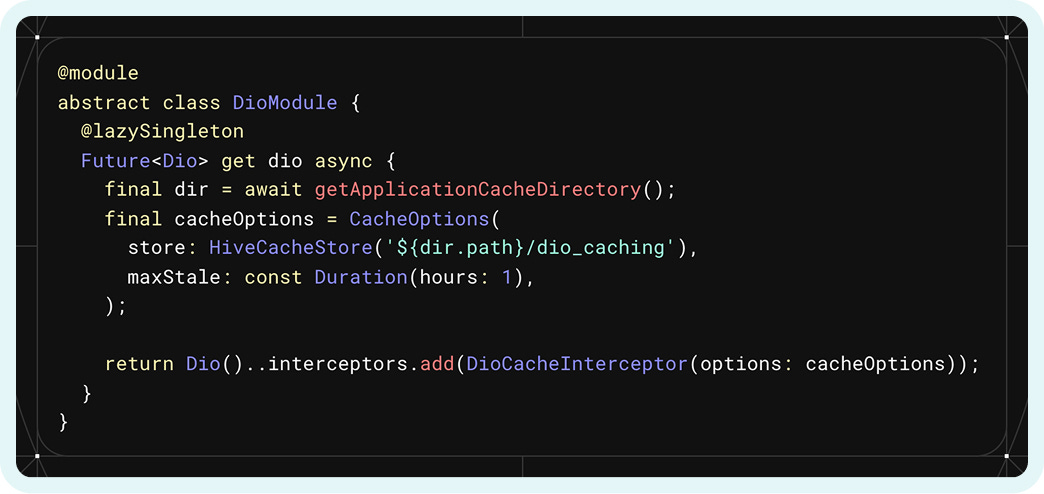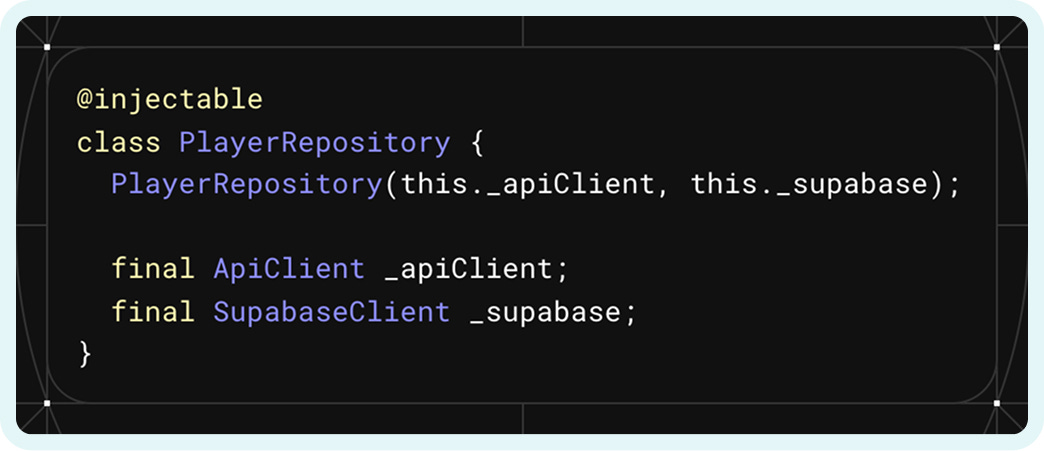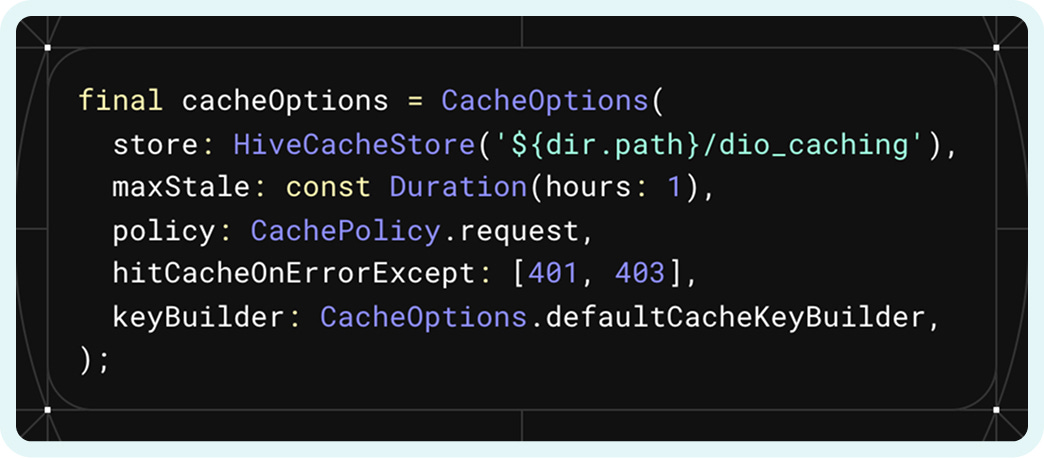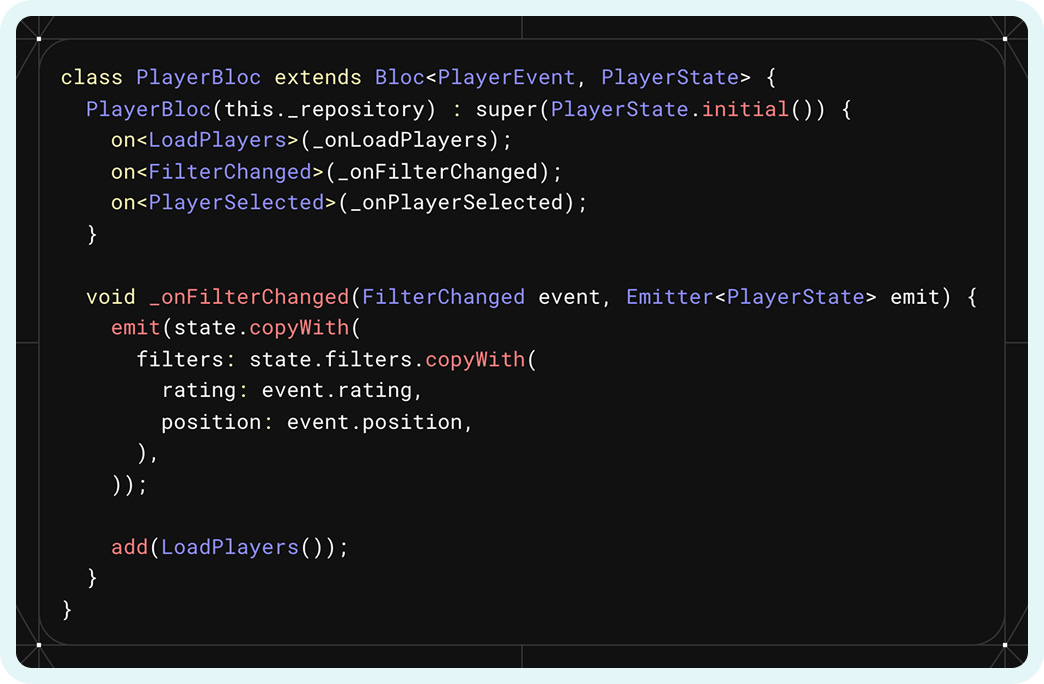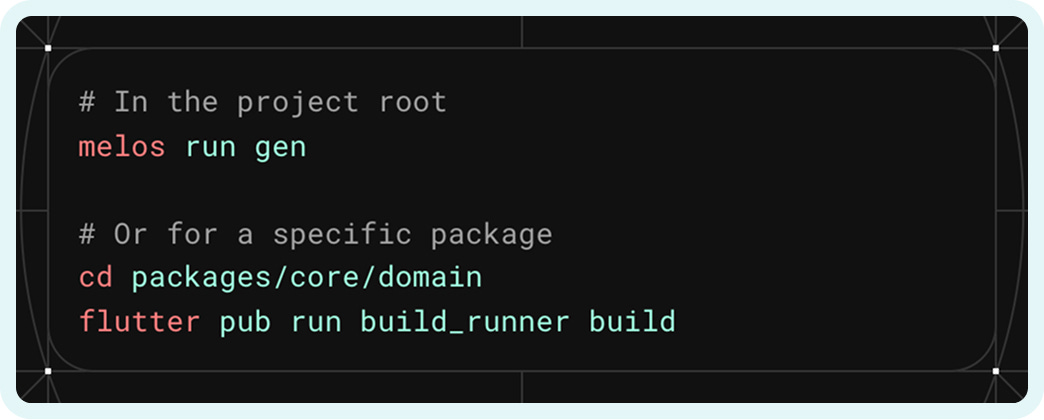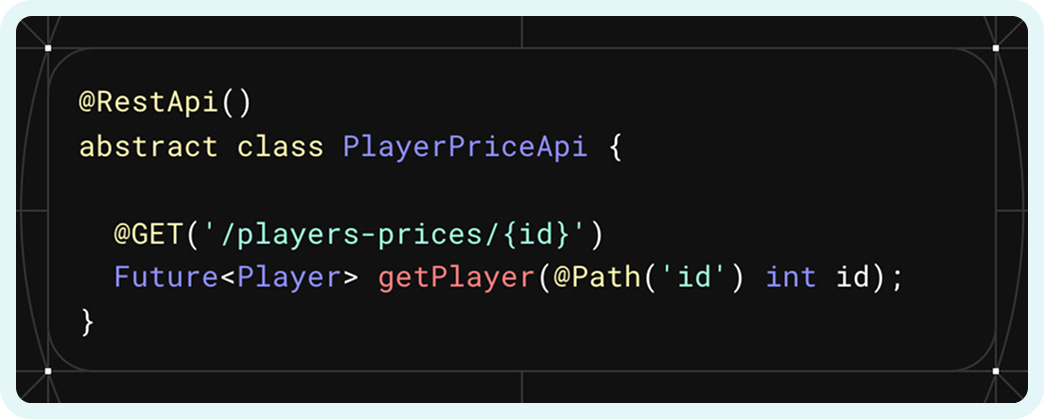Tools That Saved Me Weeks of Dev Time
How the right Flutter packages turned months of development into weeks. A practical guide to tool combinations that actually work together.
Most developers waste months building what could take weeks.
I used to be one of them. Writing boilerplate APIs, managing dependencies, rebuilding the same UI components.
The tools were already there but I wasn’t aware how deadly they are when they are used individually and in combination. And now I use them in every app, like my most recent app - FUT Maidaan.
This article is going to share those packages. Feel free to acknowledge if you are using these or haven’t used them.
If you are figuring out what is FUT Maidaan then discover yourself by downloading the app.
Get_it + Injectable: DI That Actually Works
Dependency injection in Flutter starts simple. You pass a repository to a widget. Then that widget needs another service. Soon you're passing five objects through 10 constructors just to reach the widget that needs them.
Get_it solves the access problem.
Injectable eliminates the boilerplate.
That lazySingleton annotation does heavy lifting. Injectable scans your code, finds these annotations and generates all the dependency registration code. No manual setup. No forgotten dependency registrations.
The real magic happens with the mono-repo structure. Each package declares its own dependencies and these dependencies are executed on app launch. Only non-lazy ones are gonna be instantiated.
Injectable knows to inject ApiClient and SupabaseClient automatically. When you need the repository anywhere in your app, just ask for it. No prop drilling. No global variables. Just clean dependency injection that scales with your app.
The combination reduces your mistakes and makes you focus on writing business logic and not the wiring code. Every hour saved on dependency management is an hour spent on features users actually care about.
Melos: Mono-repo Without the Pain
Flutter's package management wasn't built for large apps. Create ten packages with interdependencies and watch your productivity die. Change one shared model? Update five pubspec files. Run pub get five times. Wait for five builds.
Melos changes the game entirely.
3 commands replace 30. But the real power is in the structure it enables.
I organized FUT Maidaan into clear boundaries:
Quality layer - Shared lint rules and test utilities
Utility layer - Cross-cutting concerns like navigation and DI
Core layer - Business logic, API clients, design system
Feature layer - Actual screens users interact with
I have written a complete article just on the Mono-Repo, which addresses package distribution and their co-working relationship in detail. I think this is a must read, if you want to really create a scalable Flutter app.
Running build_runner in all packages with just 1 command
That script runs code generation only in packages that need it. Change a model in the domain package? Only domain regenerates. The player feature package stays untouched. What used to take five minutes now takes thirty seconds.
Package management becomes invisible. You think about features and architecture, not about keeping dependencies in sync.
Dio + Cache Interceptor: Smart API Calls
Mobile users have limited data. Servers have limited capacity. Yet most apps hammer both with redundant requests.
Player stats don't change every second. So why fetch them every time?
This configuration creates intelligent caching. Fresh data serves from cache instantly. Stale data triggers a background refresh. Network errors fall back to cached data. Users see instant responses while data updates silently.
Combined with Retrofit for type safety:
No more parsing JSON manually. No more runtime type errors. The compiler catches mistakes before users do. Each endpoint becomes a simple method call with full IDE support.
The cache even handles offline scenarios. Users can browse previously viewed players without internet. The app feels fast because it is fast. Cache-first architecture with automatic invalidation - the best of both worlds.
Supabase: Skip the Backend Entirely
Traditional app development means building two systems. Your Flutter app and an entire backend with authentication, APIs, database management and many more.
For now I am just using Supabase database and Edge functions. This app will have authentication later which will then include RLS on tables and more user driven data.
If you want to know how easy it has been to filter players by any type of query in Flutter, check this article.
The GUI makes development visual. See your data structure. Test queries interactively. Debug permission issues instantly. When building complex filters with nested OR conditions, visual query building beats writing SQL in the dark.
File storage? Built in. Row-level security? Configure in the dashboard. Indexes? Easy to setup. Cron Runs? Easy to maintain and monitor. Every backend feature you'd spend weeks building already exists and works.
Mappable + Bloc: State That Scales
State management is where Flutter apps become unmaintainable. Manual JSON parsing. Forgotten copyWith parameters. Equality checks that miss fields.
Dart Mappable automates the mundane:
One annotation generates:
fromJsonandtoJsonfor API communicationcopyWithfor immutable updates==andhashCodefor proper equalitytoStringfor debugging
No manual maintenance. Add a field, regenerate, everything updates. Remove a field, the compiler catches every usage.
This pairs perfectly with Bloc's event-driven architecture:
Every state change is traceable. Every update is immutable. The compiler ensures you handle all states. Testing becomes trivial events in, states out, no surprises.
The combination enforces good patterns. You can't accidentally mutate state. You can't forget to handle loading states. The architecture guides you toward maintainable code.
Build Runner: The Compound Effect
Code generation sounds boring until you realize its impact. Every model needs serialization. Every service needs registration. Every API needs implementation.
Build Runner automates it all:
But the magic is in what it generates. Take this API definition:
Build Runner creates the entire implementation. HTTP calls, error handling, JSON parsing - everything generated. You write the interface, the tool writes the implementation.
With mono-repo structure, generation becomes incremental:
Touch a model in domain? Only domain regenerates
Add an API in api_client? Only api_client rebuilds
Create a new bloc in a feature? Only that feature updates
Five-minute builds become thirty-second updates.
Firebase Test Labs: Testing on Real Devices
Emulators lie. Your high-end development phone lies. Only real devices tell the truth.
My first release proved this. Perfect on my iPhone and Samsung S20. Crashed on low-end Samsung devices. Firebase Test Labs caught what I missed.
This tests on flagship phones, mid-range devices and ancient hardware. Different Android versions. Different memory constraints. Different CPU speeds.
The results are enlightening. That smooth animation? Janky on old phones. That clever algorithm? Times out on slow processors. Test Labs is must before you submit app to google play, otherwise after multiple rejections your app will be suspended and you will have to change package id and name of the app, which I had to do. That’s why you see FUT Maidaan on iOS and FUTMaidaan on Google play.
Combined with BDD tests for clarity:
Feature: Player Data Loading
Scenario: Player data loads successfully
Given I am on the player list page
When the page loads
Then I see text {'Lionel Messi'}
And I see text {'93'}
And I see text {'RW'}
And I don't see text {'Loading...'}
Scenario: Player data fails to load
Given I am on the player list page
And the network is unavailable
When the page loads
Then I see text {'Failed to load players'}
And I don't see text {'Lionel Messi'}
And I see widget {RetryButton}
Scenario: Loading state is displayed
Given I am on the player list page
And the API response is delayed
When the page loads
Then I see text {'Loading...'}
And I see widget {CircularProgressIndicator}
And I don't see text {'Lionel Messi'}Anyone can read these tests. Product managers. Designers. New developers. Clear tests catch bugs before users do.
Most importantly when you upgrade to newer Flutter version and update dependencies, you might have fixed all compilation issues but runtime issues will only be caught in tests without running and checking whole app.
The Compound Architecture
These tools create something greater than their parts. Each combination solves specific pain points:
Get_it + Injectable removes dependency management friction. Write business logic, not wiring code.
Dio + Cache + Retrofit creates type-safe, offline-capable APIs. Users get instant responses and servers get fewer requests.
Mappable + Bloc enforces immutable, testable state management. Bugs become compiler errors.
Melos + Build Runner enables true incremental builds. Change one file, rebuild one package.
The architecture emerges naturally. Clean boundaries between packages. Clear data flow through layers. Testable components at every level.
This isn't over-engineering. It's acknowledging that apps grow, requirements change and good architecture pays dividends. Every shortcut in month one becomes technical debt in month six.
Start With Your Pain Points
You don't need every tool immediately. Start where it hurts most.
Drowning in prop drilling? Add Get_it + Injectable.
Fighting with API boilerplate? Try Dio + Retrofit.
Managing multiple features? Introduce Melos.
But commit to structure early. A mono-repo might seem excessive for five screens. By screen fifty, you'll thank yourself. Clean architecture might feel rigid initially. When adding features becomes trivial, you'll understand why.
These tools saved me weeks. But beyond time, they brought predictability. Predictable builds. Predictable state. Predictable deployment. In software development, predictability is the foundation of speed.
Ship faster by building better foundations. These tools show you how.



